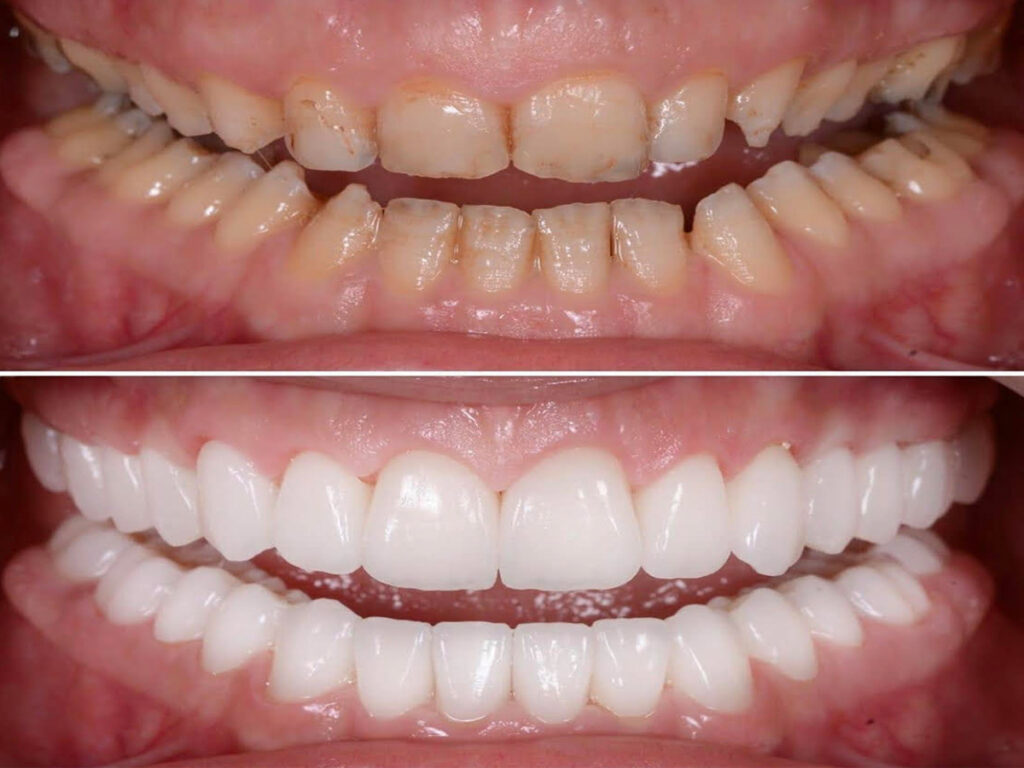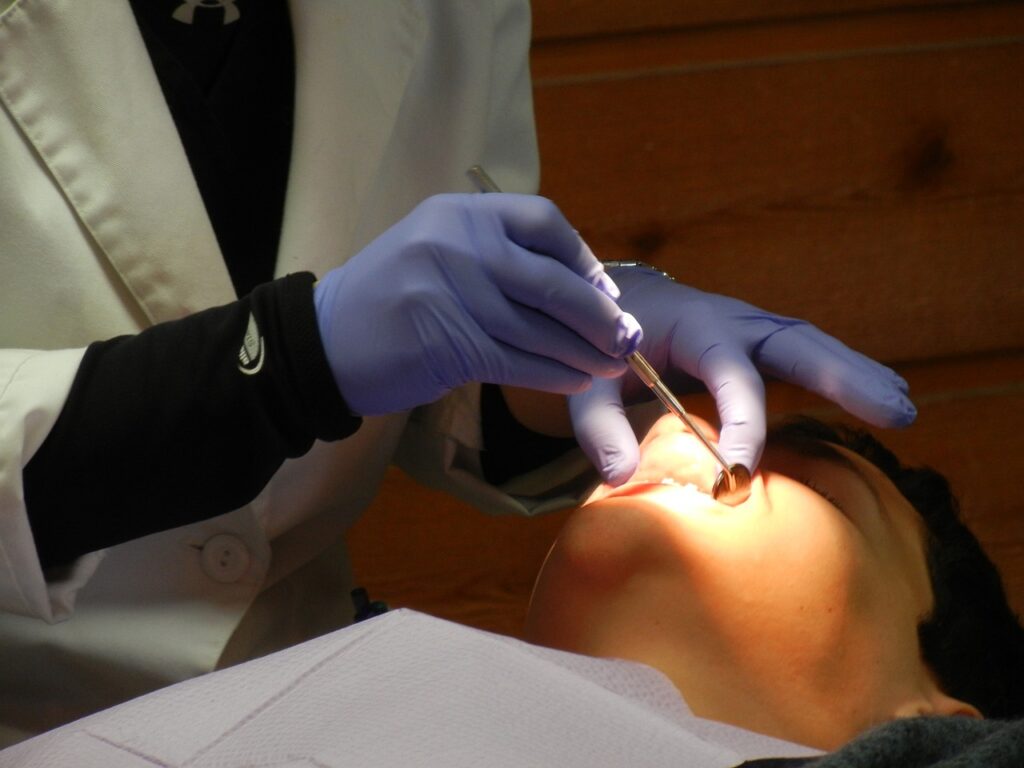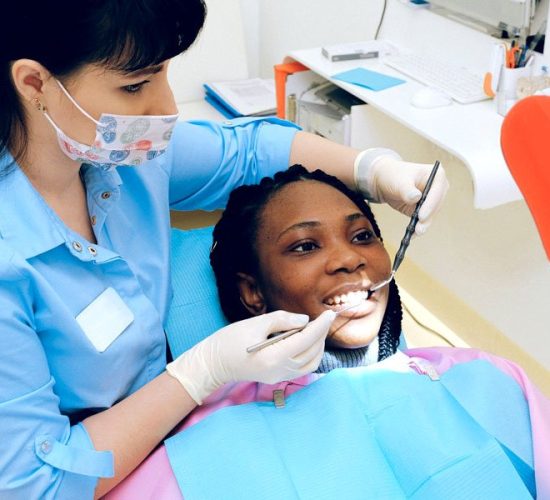Full Mouth Rehabilitation
Full mouth rehabilitation is a comprehensive dental treatment that addresses multiple dental issues to restore function, aesthetics, and oral health in a single coordinated effort.
Transforming Oral Health and Aesthetics through Coordinated Dental Care.
The Comprehensive Approach of Full Mouth Rehabilitation

Procedure
The full mouth rehabilitation procedure involves a combination of various dental treatments to provide more than just a smile makeover.
Here's a detailed breakdown of the procedure
1. Initial Evaluation : The process begins with a comprehensive examination of the patient's oral health, including X-rays, scans, and impressions of the teeth and jaws. This helps the dentist assess the extent of dental issues and plan the necessary treatments.
2. Consultation and Treatment Planning : Based on the evaluation, the dentist discusses treatment options with the patient, taking into account their dental goals, concerns, and budget. A customized treatment plan is then developed to address each specific issue comprehensively.
3. Preparatory Procedures : Before proceeding with the main treatments, any existing dental problems such as decay, infection, or gum disease are addressed. This may involve procedures like fillings, root canals, or periodontal therapy to ensure a healthy foundation for the rehabilitation process.
4. Restorative Treatments :
-Crowns and Bridges: Damaged or missing teeth are restored using dental crowns or bridges. Crowns are custom-made caps that cover individual teeth, while bridges replace one or more missing teeth by anchoring artificial teeth to adjacent natural teeth.
- Dental Implants : Missing teeth can also be replaced with dental implants, which are surgically placed in the jawbone to serve as artificial tooth roots. Once integrated with the bone, implants can support dental crowns, bridges, or dentures.
5. Cosmetic Enhancements:
- Veneers: Thin porcelain shells are bonded to the front surfaces of teeth to improve their appearance by covering stains, chips, or gaps.
- Teeth Whitening : Professional whitening treatments may be performed to lighten the shade of natural teeth, enhancing the overall aesthetics of the smile.
6. Orthodontic Treatment : In cases where misalignment issues are present, orthodontic treatment such as braces or clear aligners may be recommended to straighten the teeth and improve bite alignment.
7. Final Adjustments and Refinements : Once the main treatments are completed, the dentist makes any necessary adjustments to ensure proper fit, function, and aesthetics. This may involve fine-tuning the bite, adjusting the shape or color of restorations, or making other refinements as needed.
8. Ongoing Maintenance : After full mouth rehabilitation, regular dental check-ups and hygiene appointments are essential to maintain the results and prevent future dental problems. The patient is also educated on proper oral hygiene practices and given guidance on how to care for their new restorations.
By following this comprehensive approach, full mouth rehabilitation can effectively address a wide range of dental issues, restore oral health and function, and rejuvenate the appearance of the smile.
Benefits of Full Mouth Rehabilitation
Full mouth rehabilitation offers a holistic approach to dental care, addressing various concerns such as lost tooth structure, missing teeth, aesthetic desires, improved chewing function, enhanced speech, and the promotion of healthy gums in a coordinated treatment plan.
- Restoring lost tooth structure
- Replacing missing teeth, if any
- Achieving desired aesthetics
- Improving chewing capacity
- Enhancing speech
- Promoting healthy gum

Technology
1.Digital Imaging and Planning : Advanced imaging technologies such as cone beam computed tomography (CBCT) and intraoral scanners allow for detailed 3D imaging of the teeth, jaws, and surrounding structures. This enables precise diagnosis, treatment planning, and virtual simulations of the proposed dental restorations.
2. CAD/CAM Technology : Computer-aided design/computer-aided manufacturing (CAD/CAM) technology enables the fabrication of highly precise dental restorations such as crowns, bridges, and veneers. Digital impressions captured by intraoral scanners are used to design restorations digitally, which are then milled from ceramic blocks with utmost accuracy.
3. 3D Printing : In some cases, 3D printing technology is employed to produce surgical guides, temporary restorations, and other dental components with exceptional precision. This streamlines the fabrication process and ensures optimal fit and function of the restorations.
4. Laser Dentistry : Laser technology is utilized for various aspects of full mouth rehabilitation, including soft tissue contouring, gum recontouring, and treatment of gum disease. Dental lasers offer precise control, minimal invasiveness, and faster healing compared to traditional surgical methods.
5. Virtual Smile Design : Digital smile design software allows dentists to digitally plan and simulate the desired aesthetic outcomes of full mouth rehabilitation procedures. Patients can visualize their projected smile transformation before treatment begins, helping them make informed decisions and set realistic expectations.

